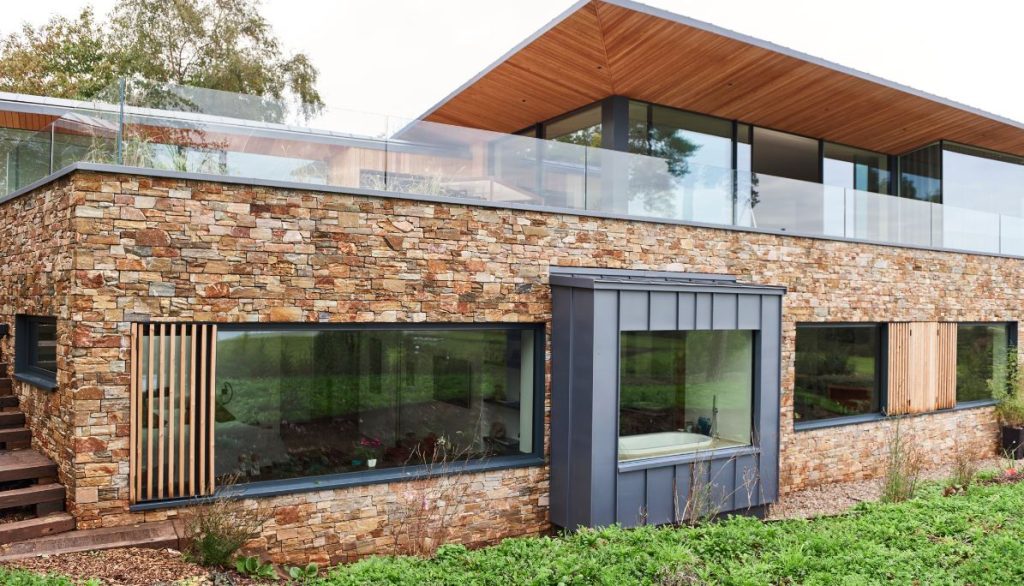The harmony between form and function lies at the heart of every successful architectural endeavour. This synergy shapes our built environment and influences our interaction and connection with it. At the intersection of this dynamic interaction are two vital trades—glaziers and carpenters—whose collective creativity and craftsmanship breathe life into our buildings.
Glaziers and carpenters, though working with distinctly different materials—glass and wood, respectively—share the common goal of creating aesthetically pleasing yet functional spaces. This blog post explores these tradespeople’s interconnected roles in creating architectural projects.
Glaziers specialize in handling glass, a material known for its captivating aesthetic appeal and ability to manipulate light within spaces. From the grandeur of towering glass skyscrapers to the elegance of stained glass windows, the artistry of glaziers is evident in various architectural designs.

On the other hand, carpenters shape wood—a versatile and time-tested building material—to construct and decorate structures. The work of carpenters is foundational to many buildings and brings warmth and texture, contributing significantly to their aesthetic and functional attributes.
The harmonious marriage of these crafts in architecture—where form and function intertwine seamlessly—is an exciting narrative of craftsmanship, innovation, and design.
Understanding this synergy illuminates how architecture transcends the mere creation of buildings to become an expression of artistry and functionality. Join us as we delve into this fascinating world of glaziers and carpenters, exploring how their synergistic collaboration shapes the architectural projects we see and experience daily.
Deep Dive: The Role of a Glazier in Architectural Projects
In the world of architectural design, glaziers play an indispensable role. Their work revolves around cutting, installing, and removing glass and glass-like materials in buildings. Their repertoire includes designing and installing windows, skylights, facades, and occasionally more complex structures like glass staircases and walkways.
Glaziers not only install but also help design these features, contributing significantly to buildings’ form and function. From an artistic standpoint, glaziers work with architects to select the type, colour, and texture of glass to enhance the aesthetic appeal of a building. Functionally, they play a crucial role in shaping a structure’s lighting, energy efficiency, and even acoustics.
A case in point is the iconic Louvre Pyramid, Paris, an architectural masterpiece where the role of glaziers was paramount. The geometrically intricate, predominantly glass structure serves as the main entrance to the Louvre Museum. Designed by I.M. Pei, this project required glaziers to install over 600 rhombus and triangular glass segments, transforming the functional need for an entrance into a symbol of modern art.
Comprehensive Look: The Role of a Carpenter in Architectural Projects
Carpenters, like glaziers, are pivotal to architectural projects. From the initial framework to the final trim, carpenters are involved in all stages of construction. They work with various types of wood to create large and small structures for residential, commercial, and public buildings.
Their work extends beyond construction, contributing to the form and function of a building. Aesthetically, carpenters craft beautiful interiors, crafting furniture, cabinets, and decorative elements. Functionally, they ensure the structural integrity of a building, making it safe and durable.
The Tamedia Office Building in Zurich is an exemplary project designed by Shigeru Ban. Carpenters played a critical role in this seven-story wooden structure, showcasing how wood could be used innovatively in modern construction.
Interplay Between Form and Function in Architecture
The principle ‘form follows function’ is a cornerstone of architecture. It implies that the shape of a building should primarily relate to its intended function or purpose. Both glaziers and carpenters contribute to this principle.
Their work impacts the form, shaping the aesthetic appeal, and the function, determining the usability and comfort of a building. Visit pro glazier website to find out more.
Achieving a balance between aesthetics and utility is crucial in architectural design. For instance, while a glazier might suggest a large glass facade for its visual appeal, considerations around thermal insulation, safety, and privacy must also be considered.
Synergy of Glaziers and Carpenters in Architectural Projects
The collaboration between glaziers and carpenters in a project often begins during the planning stage. Both trades must work together to ensure that the material and structural choices align with the project’s goals and the architect’s vision.
Their integration can lead to a superior final product. For instance, in a project with large glass facades, carpenters might need to craft wooden frames to support the glass structures, requiring high collaboration and coordination.
The Crystal Houses in Amsterdam stands as a testament to this synergy. MVRDV’s design involved a facade of glass bricks supported by a wooden framework, showcasing a perfect blend of glazier’s and carpenter’s crafts.
The Future of Collaborative Architectural Practice
The field of architecture is evolving rapidly, influenced by advancements in technology and the increasing emphasis on sustainable practices. These changes promise to shape the future collaboration between glaziers and carpenters.
Advanced design software allows better collaboration between various trades, enabling them to simulate and evaluate designs before construction. In terms of sustainability, both glaziers and carpenters play a crucial role. Glaziers can choose energy-efficient glazing options, while carpenters opt for sustainably sourced wood.
As we look to the future, the synergy between glaziers and carpenters will likely be more crucial than ever. Their collaborative efforts will continue to shape our built environment, reflecting an ongoing dialogue between form and function, art and utility, tradition and innovation.

The world of architecture is a testament to the extraordinary results that can be achieved when different crafts unite towards a common goal. As explored in this post, glaziers and carpenters play pivotal roles in architectural projects. Their expertise, although centred around distinct materials, merges to shape our built environment.
The synergy between glaziers and carpenters is paramount in striking a balance between form and function in architecture. Their combined creativity and technical skill influence not just the aesthetic appearance of buildings but also their usability, comfort, and sustainability. This has been evidenced in numerous architectural masterpieces, from the glass elegance of the Louvre Pyramid to the wooden innovation of the Tamedia Office Building.
Looking towards the future, the collaboration between these two trades will continue to evolve, shaped by technological advancements and the growing emphasis on sustainable practices. As they adapt to these changes, glaziers and carpenters will continue to find innovative ways to synergize their crafts, pushing the boundaries of architectural design.
The balance of form and function remains the key principle guiding this collaboration. However, as the definition of ‘function’ expands to include considerations like energy efficiency and environmental impact, the work of glaziers and carpenters will reflect these shifts. Consequently, their collaborative efforts will continue to define and redefine our built environment in the future.
In essence, the tale of glaziers and carpenters in architectural projects is a tale of synergy—of how two distinct crafts can come together to create something more than the sum of its parts. It is a testament to the power of collaboration and the extraordinary beauty that it can bring to our world.





